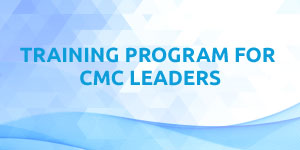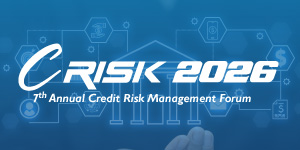Free knowledge to monitor the world of events. Have a look at our must read Blogs on Pharma, Finance, HR, Health and Cross Industry.
Mastering the Dynamics of Medical Device Market Access
2022-08-16
Medical Device Market Access in the ever-changing healthcare sector.
Access to the medical device market is essential in the ever-changing healthcare sector to guarantee that cutting-edge innovations effectively reach patients. However, several obstacles to commercializing a product exist, from payer negotiations to regulatory barriers. In this blog, well explore the nuances of medical device market access, its importance, and strategies to navigate this intricate process successfully.
What is Medical Device Market Access?
Market access can be described as the strategies and tactics used by medical device manufacturers to ensure the availability and reimbursement of their products in a favorable marketplace. It means, inter alia, meeting the regulatory requirements, securing reimbursement authorizations, and interacting with healthcare providers, payers, and patients.
Medical devices as opposed to drugs may use different regulatory processes, and pricing strategies and/but harnessed on clinical use adoption. Hence, specialized strategies are necessary for effective access to the wider market in this case.

The Role of Regulatory Affairs in Medical Device Market Access
Regulatory affairs are important for the readiness and promotion of marketing as it is the link between manufacturers and regulators. This department stimulates the entire monitoring process starting from the design stage through to the post-market surveillance to bear the cost, harm, and risk associated with making the product at ease.
Such regulatory affairs teams are responsible for supervising organizations while developing the product, to make sure they do not breach the requirements. It is in their remit to prepare both pre-market and submission documentation so they are quite reputable, ensuring payment of approvals according to present-day regulations. They also deal with device classification which is important in ascertaining the regulatory pathway for the various countries dealing with the products.
Medical and surgical field devices in the market cannot stay without deployment unless as such devices and instruments are in strong demand. This allows for ongoing contact with authorities answering solving queries and various modifications. Monitoring for safety and performance is also necessary for trust and compliance over the long term in post-marketing surveillance.
Why is Market Access Important?
- Patient Access to Innovation: There is a target market for a promising technology that is meant to bridge the gap between the patient population and the deployed technology. This ensures that the innovative solution put forth by the developers leads to productive outcomes that are concerned with health.
- Regulatory Compliance: The integration and consideration of these regulatory standards like that of the MDR in the EU or FDA in the US is seen as being extremely vital for anybody and any organization who is pursuing product registration in the market and getting the product to the market.
- Revenue and Sustainability: Enabling access to the market becomes a priority requirement for any manufacturer so that the expenditure incurred on research and development can be recovered, where the company can also start making profits, and there are streams of innovation that are not dormant.
- Stakeholder Engagement: Some successful device marketing strategies complement the market access policy and focus on partnerships with payers, providers, and policymakers to make sure that the particular devices benefit is understood, and its use is encouraged.
Common Challenges in Medical Device Market Access
- Regulatory Compliance: It is important to note on a very critical aspect that meeting the ever-changing global standards is quite challenging. There is the need to frequently check for new updates with authorities such as the FDA and EMA and have a compliance officer who will be responsible for compliance with national laws.
- Quality Control: It has to be emphasized that ensuring the quality of the products manufactured across different production batches is important. Establish an appropriate QMS and periodically retrain employees so that defects are reduced and standards are met.
- Supply Chain Disruptions: Issues like production being stalled due to the unavailability of raw materials need to be addressed. Enhance supplier base and make use of supply chain management tools to get the problem anticipated and solved ahead of time.
- Technological Advancements: The use of technology mid-way in production could result in changes in time allocated to different phases of production. Develop flexible procedures so that it would be easy to implement new technologies and changes without negatively affecting the work being done.
- Intellectual Property (IP) Protection: Take necessary steps to implement a sound patenting strategy, use non-disclosure agreements, and carry out an IP vulnerability assessment regularly to mitigate the risk of loss of IP.
- Market Penetration: The new marketing strategy has to be functional in the new target market. This means that regulatory compliance, the readiness of the market, existing competition, and customer loyalty in the new markets have to be addressed. It is necessary to carry out a wide range of studies and access interested parties and strategies in relation to the requirements and competition in the target market.
Key Strategies for Successful Market Access
- Understand Regulatory Pathways: Engage early with regulatory authorities to align on approval requirements and timelines. Employ local expertise to navigate region-specific nuances.
- Develop Robust Clinical Evidence: Conduct comprehensive clinical trials and post-market surveillance to demonstrate safety, efficacy, and economic value.
- Tailor Value Propositions: Customize value messages to address the needs of different stakeholdersclinicians, payers, and patients. Highlight cost-effectiveness and quality-of-life improvements.
- Leverage Health Economics and Outcomes Research (HEOR): UseHEOR to document the device's value proposition in terms of healthcare cost and patient outcomes to justify
- Engage Early with Payers: Engagepayers early in development, creating alignment on evidence requirements and trust.
- Utilize Digital Tools: Integratedigital platforms to collect data, monitor patients, and engage them, further enhancing the value proposition.
The Future of Medical Device Market Access
The future of market access will be one of adaptation to new, evolving healthcare landscapes. In the face of emerging value-based care, outcomes-based performance will increasingly have to be demonstrated by the manufacturer. Artificial intelligence (AI) and connected devices are also changing stakeholder expectations and requirements for data insight.
Moreover, the emphasis on patient-centricity is driving manufacturers to include patient-reported outcomes and engagement strategies in their market access plans. Collaboration between regulators, payers, and industry players will be key to overcoming existing challenges and fostering innovation.
Conclusion
Medical device market access is more than just a regulatory process; it is a strategic imperative for ensuring that life-saving technologies benefit patients worldwide. By understanding the complexities of regulatory frameworks, tailoring value propositions, and engaging with key stakeholders, manufacturers can navigate the challenges of market access effectively. As the healthcare industry continues to evolve, a proactive and adaptive approach will be essential for success.
Do you want to know more about the Medical Device Market Access? Join us at the Medical Device Market Access Masterclass on 06-07 February 2025.
Check out the upcoming in-person masterclass on Advanced Medical Device Regulation!
By Shara Najimudeen, Digital Marketing Executive, GLC Europe, Colombo Office, Sri Lanka.
Get a feel for our events

Training Program for CMC Leaders - EU edition
27th October 2025 - 16th January 2026
Rich with practical insights and real-world applications
learn more >>
Training Program for CMC Leaders - US edition
27th October 2025 - 16th January 2026
Rich with practical insights and real-world applications
learn more >>
Mastering the Common Technical Document (CTD) for Biologics Masterclass - EU edition
12-16 January, 2026
From guidelines to submissions
learn more >>














